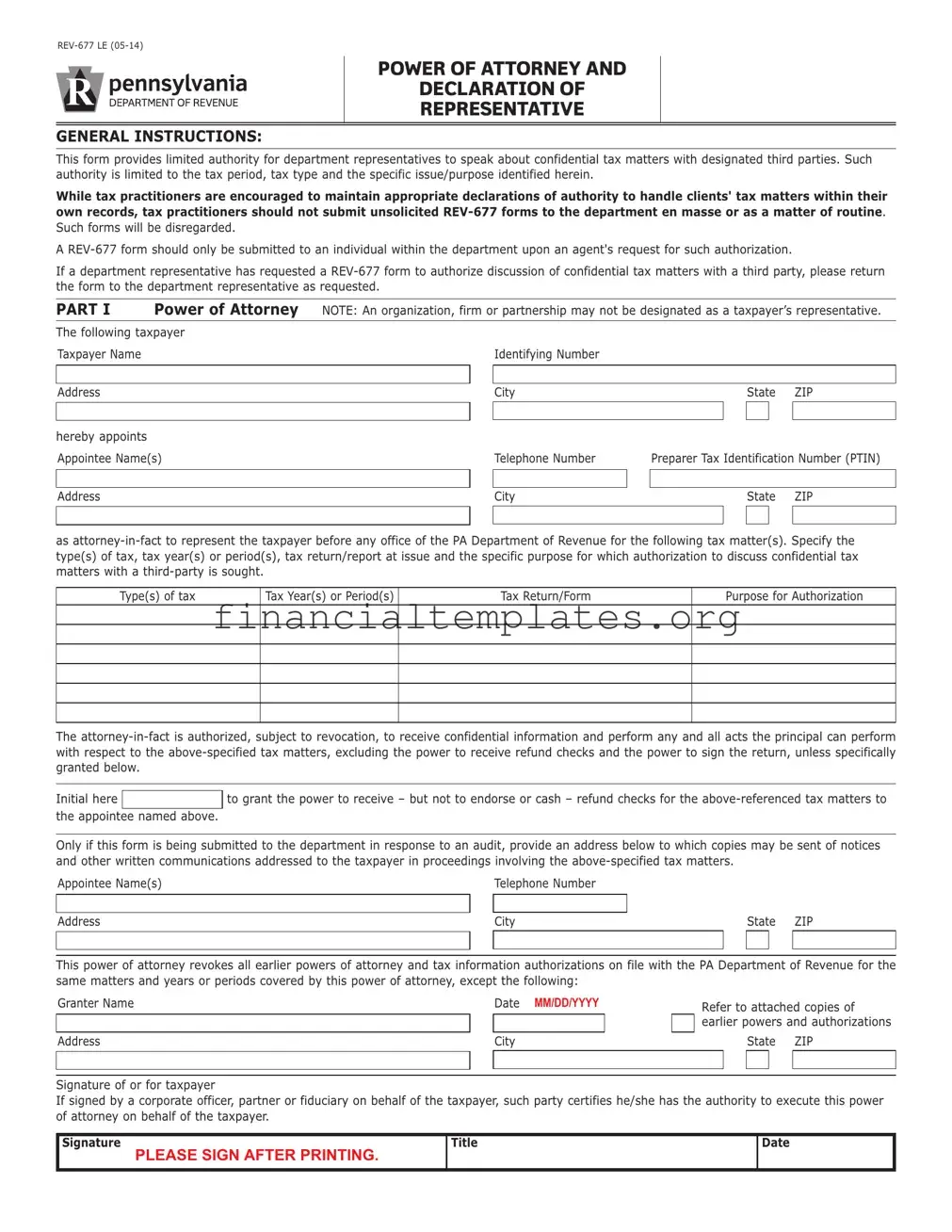A General Power of Attorney (POA) form bears similarity to the Tax POA, as both authorize someone, known as the agent or attorney-in-fact, to act on behalf of another person, the principal. However, while the Tax POA specifically grants the agent authority to handle tax matters with the IRS on the principal's behalf, a General POA is broader, allowing the agent to make financial, legal, and sometimes personal decisions.
The Durable Power of Attorney for Health Care is another document related to the Tax POA. It designates an agent to make healthcare decisions for the principal if they become incapacitated. Although it pertains to health decisions instead of tax matters, it parallels the Tax POA in how it empowers an agent to act in the principal’s stead under specific circumstances.
The Limited Power of Attorney is akin to the Tax POA, sharing the feature of granting an agent powers to act in the principal's place. The significant difference lies in the scope; the Limited Power of Attorney is tailored for specific tasks or timeframes, whereas the Tax POA focuses solely on tax-related responsibilities.
The Advance Healthcare Directive, while primarily healthcare-focused, shares a conceptual similarity with the Tax POA. It lays out instructions for medical care if the individual cannot make decisions themselves, analogous to how the Tax POA specifies how tax matters should be handled by an agent on the principal’s behalf.
A Financial Power of Attorney parallels the Tax POA in that it authorizes an agent to manage the financial affairs of the principal. However, it encompasses a broader range of financial activities beyond tax matters, including banking transactions, real estate management, and investment decisions.
The Revocation of Power of Attorney form serves as the counterpart to any POA form, including the Tax POA. It is a document through which the principal can cancel or revoke the powers granted to an agent, highlighting the control the principal retains over the powers assigned to another.
A Living Will, distinct in its focus on end-of-life decisions rather than delegating decision-making authority, shares a similarity with the Tax POA through its function of recording specific wishes of an individual, to be executed when they themselves cannot express or enforce these wishes.
The Executor of Will is a document appointing a person to manage the estate of someone who has passed away. Like the Tax POA, it grants an individual the authority to perform certain acts on behalf of another, although it is used posthumously to administer the wishes contained in a will.
The Business Power of Attorney allows a business owner to designate someone else to make decisions regarding their business. This bears a resemblance to the Tax POA as it delegates decision-making power, but it is specifically tailored to the operations and decisions within a business context.
The Real Estate Power of Attorney is a document specific to real estate transactions, where an individual grants another person the authority to act on their behalf in matters related to property. It parallels the Tax POA by granting authority for a particular area of the principal’s affairs, emphasizing the importance and specificity of the powers granted.




 is known to and signed in the presence of the two disinterested witnesses whose signatures appear here:
is known to and signed in the presence of the two disinterested witnesses whose signatures appear here:
 appeared this day before a notary public and acknowledged this power of attorney as a voluntary act and deed.
appeared this day before a notary public and acknowledged this power of attorney as a voluntary act and deed.